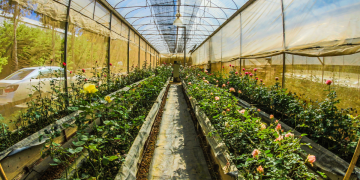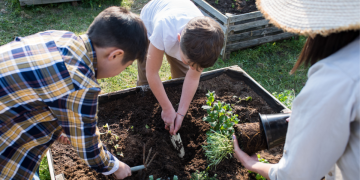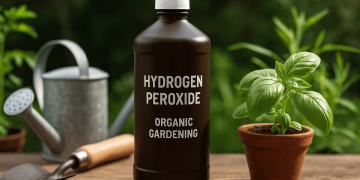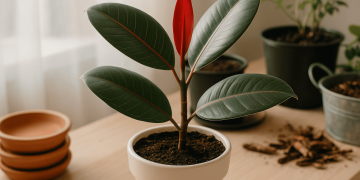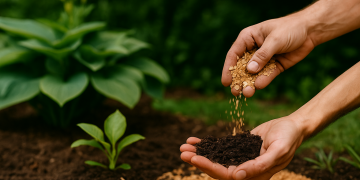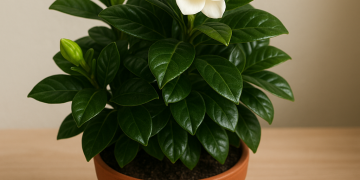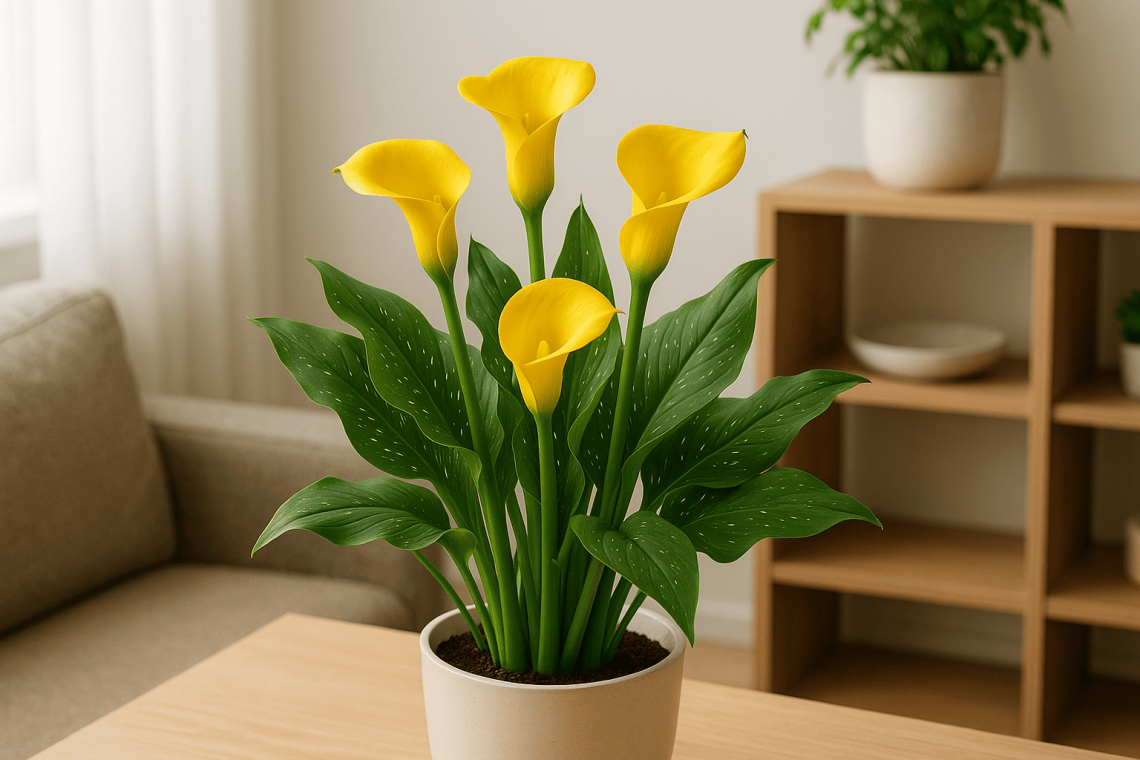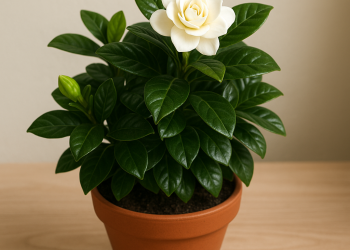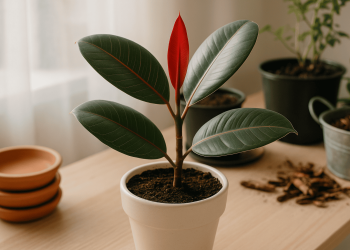Table of Contents
ToggleAre Calla Lilies Good Indoor Plants? What to Expect When Growing Calla Lily Indoors
If you are drawn to lush greenery and elegant blooms inside your home, you might naturally wonder: do Calla Lilies do well indoors? The answer is a reassuring yes. Calla Lilies can thrive as indoor plants, offering not only their striking, trumpet-shaped flowers but also lush, vibrant foliage that instantly elevates any living space. Their ability to adapt makes them an excellent choice for apartment dwellers or anyone eager to enjoy beautiful blooms without a traditional garden.
When considering where you should put Calla Lilies indoors, it helps to know that these plants like consistency. Choose a spot where they will receive bright, indirect light—think a well-lit living room, a bright bedroom corner, or near a window shielded by a sheer curtain. This prevents the leaves and blooms from scorching under harsh sunlight, but ensures the plant gets enough energy to thrive. Steady temperatures and protection from drafts or sudden temperature swings also allow Calla Lilies to flourish. This level of control is much simpler to achieve indoors than out, giving you a real advantage as a home gardener.
One of the biggest perks to growing Calla Lilies indoors is their relatively easy care routine. If you’re wondering how to care for a Calla Lily plant indoors, the essentials come down to regular but moderate watering, stable environments, and mindful feeding. Overwatering is a common pitfall—letting the top soil dry slightly between waterings helps maintain healthy roots. When it comes to how to fertilize Calla Lilies in pots, a balanced, all-purpose liquid fertilizer applied every few weeks during the growing and flowering season will support vibrant blooms and ongoing vitality.
A key expectation for indoor growers revolves around longevity and display. How long do potted Calla Lilies last indoors? With attentive care, their stunning flowers can last for weeks, and the plant itself can stay lush for months, even year after year. While blooms are most abundant in late spring and summer, healthy Calla Lilies often rebloom indoors after a brief dormant period if their needs are met. Choosing the best indoor Calla Lily varieties can also influence your experience; look for compact hybrids such as ‘Captain Romance’, ‘Crystal Blush’, or ‘Pink Melody’ that are bred to thrive in pots with smaller root systems and abundant flowering.
Ultimately, selecting a Calla Lily as your next indoor companion is a decision you’re unlikely to regret. Their unforgettable beauty and manageable routine make them ideal for both seasoned plant lovers and beginners alike. Focusing on location, watering discipline, periodic fertilizing, and avoiding environmental stresses will reward you with a standout indoor plant that brings an enduring sense of style and tranquility to your home.
Related Article
If you're exploring other lily species for indoor enjoyment, don’t miss our comprehensive guide:
How to Take Care of a Lily Plant Indoors: A Practical Peace Lily Care Guide.
Indoor Calla Lily Care: Step-by-Step Instructions for Light, Watering, Temperature and Flowering
Caring for a calla lily indoors is all about understanding its unique needs—especially when it comes to light, watering, temperature, and encouraging vibrant blooms. Whether you’re a seasoned indoor gardener or introducing your first calla lily, these practical steps will help you nurture your plant so it thrives year-round inside your home.
The first factor to consider is light and location. Calla lilies do well indoors when placed somewhere they can bask in plenty of bright, indirect sunlight. A spot near a luminous window is perfect, but be sure to shield the plant from harsh direct rays that could scorch their elegant leaves and flowers. If you’re deciding exactly where should you put calla lilies indoors, think: an east or north-facing window ledge, or slightly set-back from a brighter southern exposure. The main goal is to offer ample light without risking sunburn

Watering needs are equally specific. For optimal calla lily care indoors, aim to keep the soil consistently slightly moist—not soggy, never bone-dry. During the plant’s active growth and flowering, water when the top inch of soil feels dry to the touch, allowing time for excess moisture to drain freely from the pot. This prevents root rot and supports robust flower production. In drier indoor environments, a little extra humidity helps; placing your pot atop a tray of pebbles with some water (making sure the pot doesn’t sit directly in the water) can boost moisture gently, echoing their natural habitat.
Temperature and humidity also play key roles. The ideal range to keep your calla thriving is between 16°C and 24°C (60°F to 75°F), well within what most homes can provide. Calla lilies cope well with typical indoor air, but if the central heating makes things dry, you might want to run a nearby humidifier or mist the plant periodically—just avoid letting excess water settle on leaves.
The best results come from the right soil and fertilizer. Choose a loose, rich, well-draining potting mix—commercial blends for indoor plants are suitable, especially if you mix in a little perlite to enhance drainage. When it comes to how to fertilize calla lilies in pots, opt for a balanced liquid fertilizer. Feed every 3–4 weeks during the blooming season, pausing once the plant finishes flowering and growth slows. This gentle feeding schedule supports lush leaves and repeated blooms, maximizing your indoor calla lily’s display.

Flowering brings beauty, but understanding the dormancy cycle is just as important for long-lasting vitality. How long do potted calla lilies last indoors? With proper calla lily care indoors, the bloom period can be extended for weeks, but after this time, the plant naturally begins to rest. When leaves start to yellow and growth pauses, gradually reduce watering—let the soil dry out and allow the roots a quiet dormancy period for several weeks. Once new shoots reappear, slowly resume your regular routine of watering and feeding. This rhythm is what keeps your calla lily healthy and helps trigger fresh flowers year after year.
For those wondering about the best indoor calla lily varieties, ‘Captain Romance,’ ‘Crystal Blush,’ and ‘California Red’ are all standout options, offering vibrant color and adaptability to indoor conditions.
Taking these steps to heart—focusing on light, watering, temperature, humidity, and the right feeding practices—will ensure your calla lily not only survives but shines as a radiant centerpiece in your home. With each season, these little attentions make the difference between a fleeting bloom and a truly enduring floral companion.
Calla Lily Plant Maintenance: Pruning, Repotting and Basic Propagation Indoors
Caring for your indoor calla lily doesn’t have to be complicated. With a little regular attention to pruning, repotting, and propagation, you’ll encourage healthier growth and a longer-lasting display. Here’s what you need to know to help your calla lilies thrive indoors—no guesswork, just confidence.
Pruning your calla lily is simple but essential. Whenever you notice yellowing leaves or wilted flowers, it’s time to trim them away. Use clean scissors or garden shears and cut right at the base of the stem. Besides keeping your plant attractive, this helps channel energy into new growth and reduces the risk of disease—two key reasons why calla lilies do well indoors over time.
If you’re wondering where you should put calla lilies indoors, remember that good light and airflow also minimize problems after pruning. Place them in bright indirect sunlight and avoid spots with excessive humidity to extend their vibrant look.
Repotting is another cornerstone of indoor calla lily care. As your plant grows, you’ll likely see roots poking through the drainage holes or notice its growth slowing down. This is your signal to repot. The ideal moment is at the end of the plant’s dormant period. Gently remove the root ball, place it into a slightly bigger pot with fresh soil, and firm it in place. This way, your lily will have space and nutrients to restart strong growth.

Propagation is perfectly manageable, even for beginners. The easiest method is by dividing rhizomes (the thick, horizontal stems just beneath the soil). When repotting, carefully separate sections of the rhizome, making sure each piece has some roots and at least one healthy bud. Plant these divisions into their own pots. With patience, each new plant can develop into a mature flowering lily.
There are more advanced propagation techniques available for those who want to explore further—consult a specialized guide if you’re curious about options beyond simple division.
⚠️ Warning
Make sure to use clean tools and take care not to damage roots while repotting or dividing the plant—this prevents infections and supports healthy regrowth.
With this basic maintenance routine, you can expect potted calla lilies to last indoors with vitality, especially if you choose the best indoor calla lily varieties and learn how to fertilize calla lilies in pots for sustained blooms. Consistent light care empowers you to maintain and even expand your collection, all from the comfort of home.
Best Calla Lily Varieties for Indoors and Solutions to Common Indoor Problems
When considering whether Calla Lilies do well indoors, variety selection makes a noticeable difference. Among the best indoor Calla Lily varieties, the classic white-flowered ‘Zantedeschia aethiopica’ stands out for its elegant blooms and impressive adaptability inside the home. In addition, compact hybrids with pastel tones—pinks, yellows, or subtle creams—consistently perform well and require less space, making them ideal for shelves or side tables. Their resilience to indoor conditions and moderate growth habits mean they’re both visually appealing and practical for interior displays.
How Long Do Potted Calla Lilies Last Indoors?
With attentive care, potted Calla Lilies can thrive and rebloom indoors for several years. Their lifespan is closely tied to how consistently you manage watering, light, and nutrients. Some growers choose to refresh their plants every year or two, especially if they notice a drop in vigor or flower production, but healthy bulbs can be kept going season after season with the right approach.
Where Should You Put Calla Lilies Indoors? Common Symptoms and Easy Fixes
The best spot for Calla Lilies indoors is where they receive bright, indirect light—close to a window that avoids intense afternoon sun, but offers enough daylight to keep leaves vibrant and encourage steady flowering.
The most common indoor problems are straightforward to spot and, with early attention, simple to address:
- Yellowing leaves often point to overwatering or poor drainage. Ensure pots have holes at the bottom and allow the soil surface to dry slightly between waterings.
- Weak or sparse flowering typically signals insufficient light, or sometimes a lack of fertilizer. Move your Calla Lily to a brighter location—ideally east or north-facing—and apply a balanced fertilizer every 4–6 weeks during periods of growth. Knowing how to fertilize Calla Lilies in pots is key: use a diluted, water-soluble formula to support healthy blooms without burning the roots.
- Spots or stem rot are usually signs of fungal issues, encouraged by stagnant air or excess moisture. Improve air circulation, trim away affected leaves, and cut back on watering frequency. Remove spent flowers and dead

✅ Recommendation
When choosing, go for compact varieties known for their indoor hardiness—they’re easier to care for and provide more predictable blooming
By focusing on suitable varieties and maintaining a watchful eye for these easy-to-diagnose issues, you’ll find Calla Lilies are an exceptionally rewarding choice for adding sophisticated color and beauty to any room.

